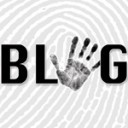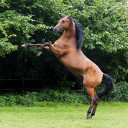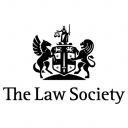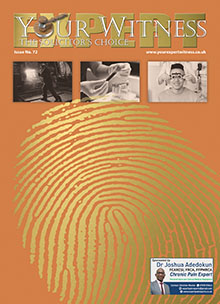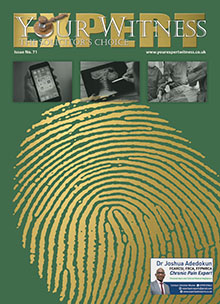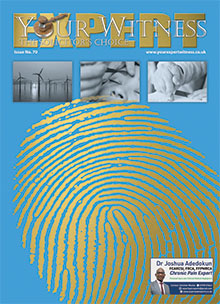IN 1835 FOX TALBOT revolutionised the photographic process by developing the ability to reproduce images from a negative. In the 21st century we have images represented as numbers and we are theoretically able to manipulate them in any way that we choose.
The development of the computerised age and the introduction of digital image enhancement have brought many benefits, and many questions, especially in relation to the investigative process and the use of this technology within the judicial system.
Traditionally, celluloidbased film has been an accepted method for recording forensic evidence.
Most forensic investigators regard digital with suspicion, and due to a lack of understanding they are reluctant to adopt the new technology. They may use a digital camera but they don’t use any enhancement technology; as a result, fingerprints which could identify an offender are discarded.
DNA has changed the way we recover crime scene evidence and it has brought significant benefits to the judicial process. In the same way, digital image enhancement has the potential (if implemented and used correctly) not only to replace the celluloid but to uncover hidden forensic evidence (not recoverable with traditional film-based media).
The key phrase here is ‘used correctly’, because there are many image enhancement software packages available that are aimed at both the professional photographer and the general public. The primary function of these products is to enable the photographer to produce an image that they like. They can also add to it or take away from it, etc.
While some of these functions can be used on forensic evidence they are not primarily designed for this application, and the accusation that the image has been tampered with is well founded. Adding a fingerprint ridge, or even a complete fingerprint, to an evidential item is a simple process. Even the format used to save the image is open to debate – should we use TIFF or JPG, and does it make any difference?
Investigating officers commonly say, “I can’t see any difference between my JPG and TIFF so I’ll use the JPG”. Unfortunately, when this is analysed by an expert, we find that the JPG format adds data created by the computer to the image.
We therefore have no way of knowing if the fingerprint ridge characteristic is ‘real’ or a computerised addition.
To maximise the potential of this new technology, experts in the field of digital image enhancement should be applying the following guidelines:
1 The original image should be authenticated (in line with the guidelines from the House of Lords science and technology committee report of 1998), and information about the photographer recorded. This should occur at the point of capture.
2 A copy of the original image must be produced and used for all the enhancements.
3 Image analysis software designed for forensic legal applications should be used – not general desktop publishing.
4 All users should be properly trained in the use of the technology (general photographers should not be expected to apply the new processes without suitable training). Training should include the practical application, the terminology, and the science behind the processes.
Legal representatives such as lawyers, prosecutors, barristers, etc should also receive training relating to the types of questions they should ask and the answers they should receive. Failure to accept and address these issues will ultimately result in a case being successfully challenged and the whole scientific process of image analysis will be brought into disrepute, resulting in the loss of a valuable scientific investigative tool.



 “Speculate before you accumulate. I am a long term regular writer and advertiser in 'Your Expert Witness - the Solicitor’s Choice'. This investment pays me substantive dividends; I get more Expert Witness work with every issue. Not only solicitors and barristers but also judges seem to read it. It is a win-win situation. Success breeds success; I must continue to write and advertise.”
“Speculate before you accumulate. I am a long term regular writer and advertiser in 'Your Expert Witness - the Solicitor’s Choice'. This investment pays me substantive dividends; I get more Expert Witness work with every issue. Not only solicitors and barristers but also judges seem to read it. It is a win-win situation. Success breeds success; I must continue to write and advertise.”